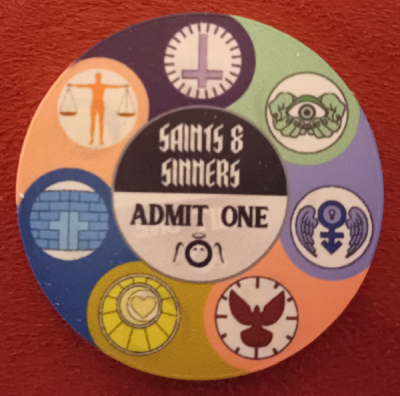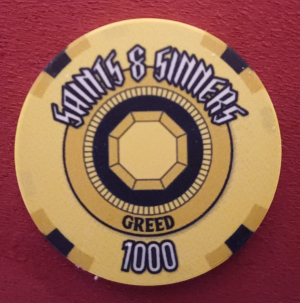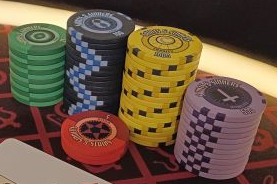One thing I did notice a while ago that is relevant I think ...
My chips have different designs on each face so I can make them all the same "way up" or not. When they are the same way up I get no spinners.
I've got a (tournie) game tomorrow and was a bit bored today so decided to put the chips out and put patterns in the edges. Problem was if there are spinners it's quite difficult to get tidy patterns that stay where they are and don't mess up - even a tiny bit. I had to get rid of all the spinners otherwise I'd just be inviting frustration and it's meant to be a fun thing to do.
After stacking up the right counts of the chips I'm using I started the long winded way - spinning each chip and turning it over if it span. Didn't take long of doing this to think there has to be a better way. It then dawned on me why not put the stack all the same "way up" as see it's that gets me a headstart - something in the back of my mind told me I'd seen something with that before. Turns out it got nearly the whole way there as I only had to then swap a few chips around, move to top or switch around, to end with good solid, non spinning stacks, that I can do patterns in.
Lovely

What's this got to do with everything? It tells me, and maybe others already knew, that it's not individual chips that warp but whole barrels all in the same direction. Someone who knows more about the materials science part of this is no doubt better clued up on when this probably happens but I think it's more than likely it's in the production/storage of the blanks than in the printing as that's the only time they'd really subjected to any heat.
It would be interesting to measure a spinner really accurately but I suspect it's caused by a tiny, hundreths of a mm, sag in the middle develops after they come out of the press, or whatever, and are stacked up vertically.
As the chips will keep the same "way up" right through the printing the spin only becomes apparent when the chips finally get the freedom to be which ever way up they want to be. (A barrel of blanks is put in the edge printer, then laid out for face A, turned over for face B and then stacked back up 20s/25s, wrapped, put in a box and put on a boat)
If face A is the bump then faceA/faceA will spin, faceB/faceB won't spin and faceA/faceB will probably be ok. The lack of spinners in hybrid chips is also easily explained.
... told you I was bored

edit: and I also apologise if that was all obvious - I'm all caught up now




